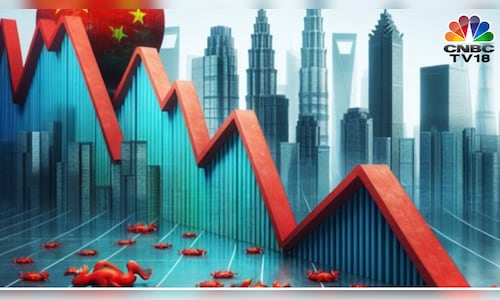[ad_1]

Despite the recent stimulus, the World Bank expects the country’s GDP growth to decelerate to 4.3% in 2025, while the Organisation for Economic Co-operation and Development (OECD) has pegged it slightly higher at 4.5%. Morgan Stanley, Goldman Sachs, and Maybank Investment have also predicted a growth rate of 4.5%, in stark contrast to the past decade, where China’s annual growth rates often surpassed 6%.
The impact of China slowdown
The anticipated slowdown has wide-reaching implications, not only for China but also for its trading partners across Asia and the globe. With another year of weak economic performance expected, especially one that could be more severe than 2024, China’s demand for key commodities and its position in global trade will likely face further strain.
China’s economic troubles are compounded by multiple factors, including sluggish domestic consumption, an overbuilt housing market, a rapidly ageing population, and rising unemployment.
Donald Trump’s return as US President will add to the uncertainty. Trump has promised to impose tariffs of up to 60% on Chinese imports in a bid to rebalance trade between the two nations.
ALSO READ: How China reacted to Trump’s win: A mix of caution and curiosity
China’s role as the global manufacturing hub
For decades, China has been a critical node in the global supply chain, especially in manufacturing. Its dominance in sectors such as electronics, technology, and industrial production remains unmatched.

China is a global leader in the production of integrated circuits, electronic components, industrial equipment, software, and emerging industries like electric vehicles (EVs) and batteries.
Moreover, China’s demand for and production of raw materials like crude oil, iron ore, copper, aluminium, coal, gold, soybeans, and sugar has made it a crucial player in global commodity markets.
A slowdown in China’s economy could have significant consequences for these industries, affecting global supply chains, trade flows, and prices.
Stimulus measures and policy challenges
In response to slowing growth, China has introduced a series of stimulus measures, including cutting the reserve requirement ratio for banks and lowering prime lending rates.
However, despite these efforts, key areas of the economy remain under pressure. The real estate sector continues to face a prolonged slump, while weak consumer inflation and low investor confidence weigh on economic activity.
At this year’s National People’s Congress, China allocated billions in funds to local governments for debt swaps, but almost no one in the market believes the measures will be enough for China to find its lost mojo.
Can China stage a comeback?
After four decades of extraordinary growth, the question on everyone’s mind is whether China can make a successful economic recovery.
With the economy expected to grow at a much slower pace in the coming years, it seems unlikely that China will see the 6-7% growth rates that characterised its economic boom.
Many economists are forecasting a more modest growth of 4-5%, with some suggesting the possibility that it could slip below 4%.
Such a scenario would not only test China’s resilience but could also have ripple effects on neighbouring countries and global trading partners, including Europe, Australia, and Brazil.
As China continues to grapple with its internal challenges—such as an oversupplied real estate market and a shifting demographic profile—the global economy will be watching closely to see if the country can find new sources of growth or whether it will face a prolonged period of stagnation.
The slowdown in China will be a key factor for global markets in the years to come, shaping everything from commodity prices to global supply chains, trade policies, and investor sentiment. As China adapts to its new economic reality, the world may be forced to recalibrate its expectations of the country’s role on the global stage.
(Edited by : Sriram Iyer)
First Published: Nov 12, 2024 7:02 AM IST
[ad_2]
Source link










